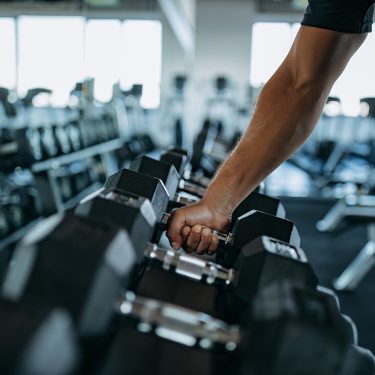


New resolution and abandonment? What is the solution ? Periodization!

Fitness
January 26, 2022
Centre Multisports
New year, new person! It’s decided, this year, I’m making changes in my life and I’m taking charge! A speech that you have probably already held yourself or heard from a friend, to finally be forgotten or left aside at the end of the month… The cold season has arrived and many of you are trying to incorporate physical training into your weekly routine in different ways. Regardless of the training you choose to incorporate into your routine, it is important to consider certain factors in order to achieve the personal goals set. This article aims to remind you of the importance of properly periodizing your training to avoid giving up along the way.
The adaptation curve
To better understand periodization, it is important to talk about the adaptation curve of the human body following training. The adaptation curve relates your physical capacity to time. During training, whether cardiovascular or muscular, your body undergoes changes in the intensity and duration of your activity.
Fatigue
The first phase of the adaptation curve is the fatigue produced by training. To have an effective workout, you have to feel an effort. Training that is too easy does not send a message to the body to change and this is often the first reason that leads us to stop training because we do not see any change. Conversely, training that is too difficult can be demotivating and can even lead to injuries.
Rest/Recovery
The second phase of the adaptation curve is recovery. Following a workout, the body will return to its initial physical condition within 24 to 48 hours depending on your diet and rest. Our body needs food and sleep to give us the energy to move and allow muscle recovery. To have effective training periodization, recovery should not be neglected. Note, however, that it is not forbidden to train every day, provided that there are variations in the muscle groups involved and the objectives targeted (example: a cardiovascular training of the lower body followed by a muscular training for the upper body the next day).
Adaptation/overcompensation
Phase 3 is overcompensation. This is when the magic happens! The human body is an extraordinary adaptive machine. Human physiology will respond to a workload by wanting to do better in the future. Thus, after a good recovery, the body will be able to reach this phase of overcompensation which will result in an improvement in your physical condition. It is therefore advisable to wait two days before redoing the same workout in order to allow the specific recovery of the muscles involved and to have an upward improvement curve.
Stabilization/regression
The last phase of the adaptation curve is stabilization. Our body will return to its initial physical capacity after a few days without training. This is all the more observable these days when our lifestyles are often facilitated and can quickly lead us to a sedentary lifestyle. By being inactive for more than a month, the body will experience very little physical stress and your condition will regress.
In summary, in order to begin an effective and sustainable training process, it is necessary to take into consideration that good periodization is essential to achieving your results. The first thing to remember: practice! Allow your body to change and improve. Then, be sure to take a rest day between two workouts involving the same muscles to allow good recovery and achieve overcompensation and therefore a gradual improvement in your physical condition. Finally, avoid risk factors: a lack of rest for a prolonged period will lead to relative overtraining and general exhaustion. Conversely, a prolonged downtime will lead to a decrease in your physical capacity.
Whether weekly, monthly, or yearly, periodization is simply your training structure. How often should you do two workouts? What determines the length of a program or session? The rest time to have between two workouts? With a ton of information on the internet, workout programs and challenges posted by many on social media, it’s easy to get lost. To guide you in your goals, properly structure your approach and create complementary programs specific to your needs, do not hesitate to ask for the services of a kinesiologist!
by: Sébastien Fournier, B.Sc.
Kinesiologist











